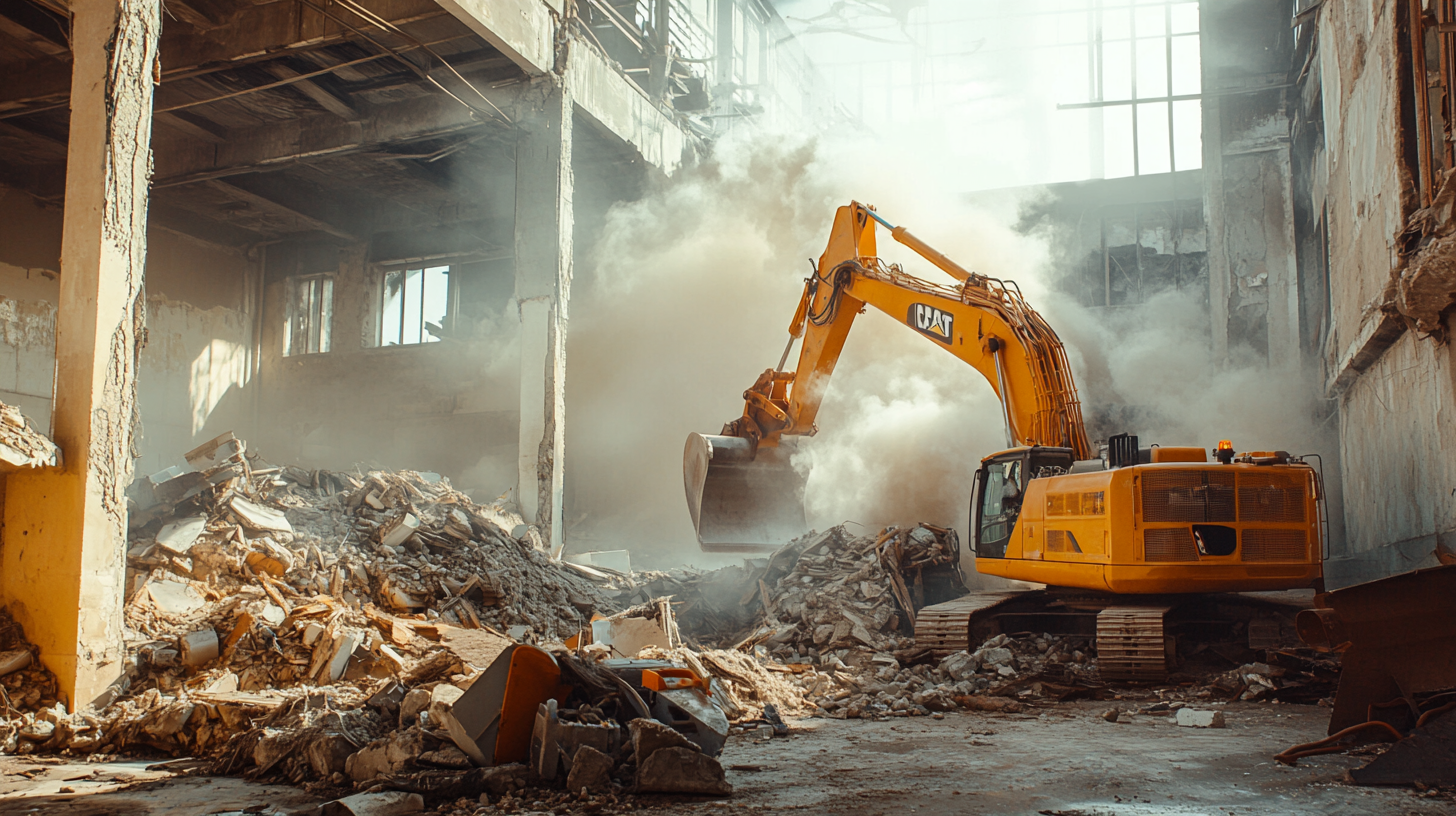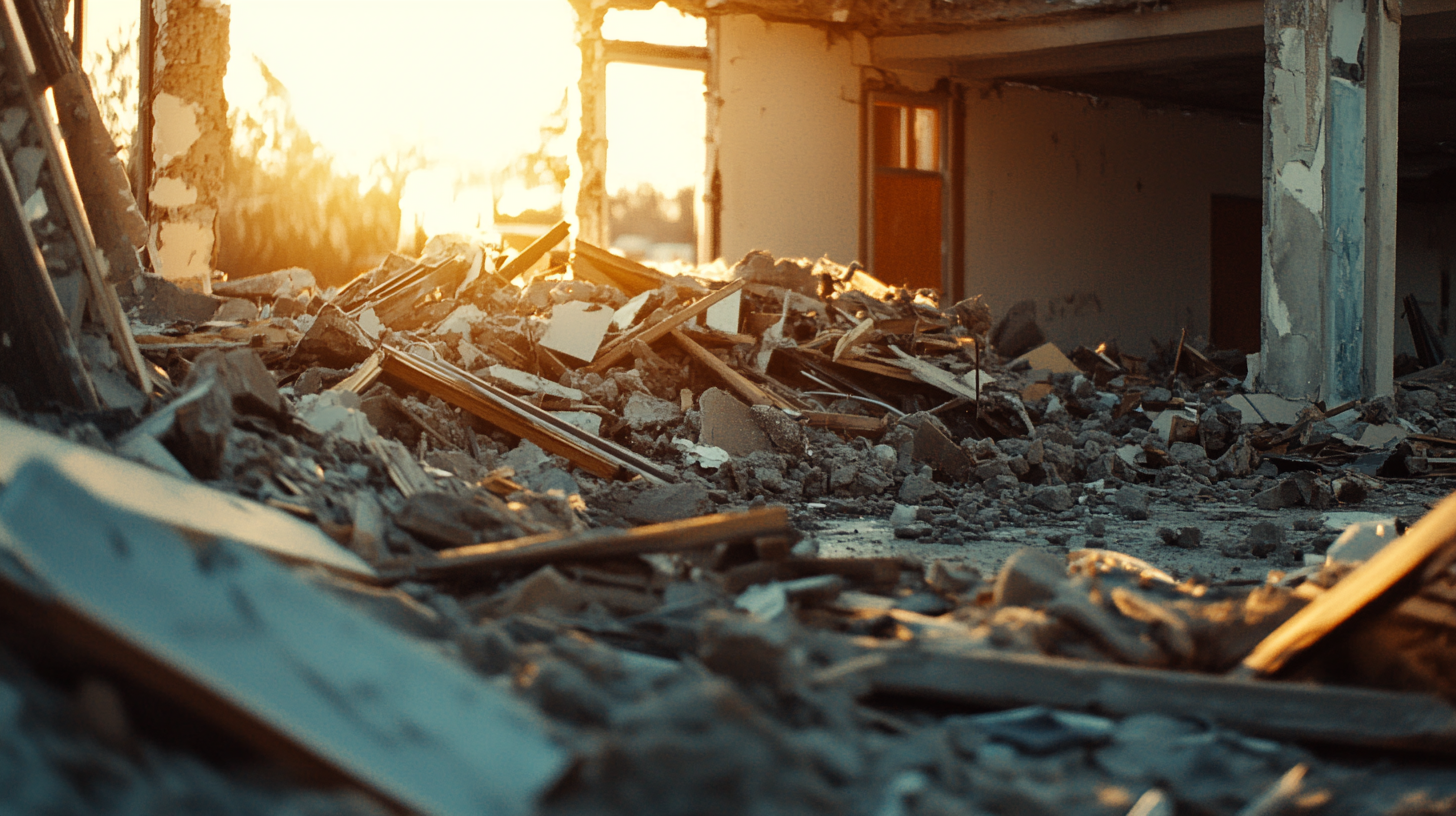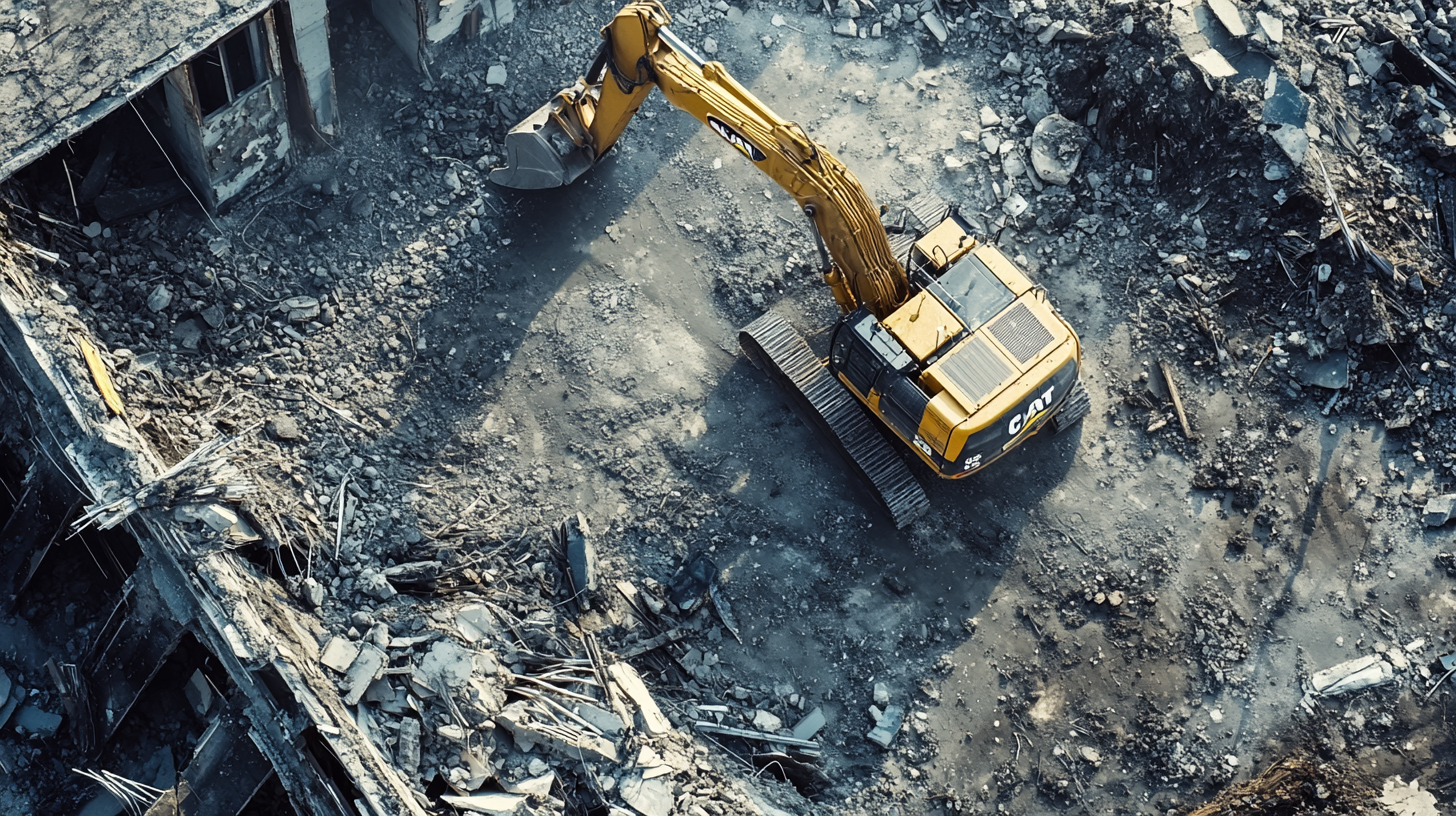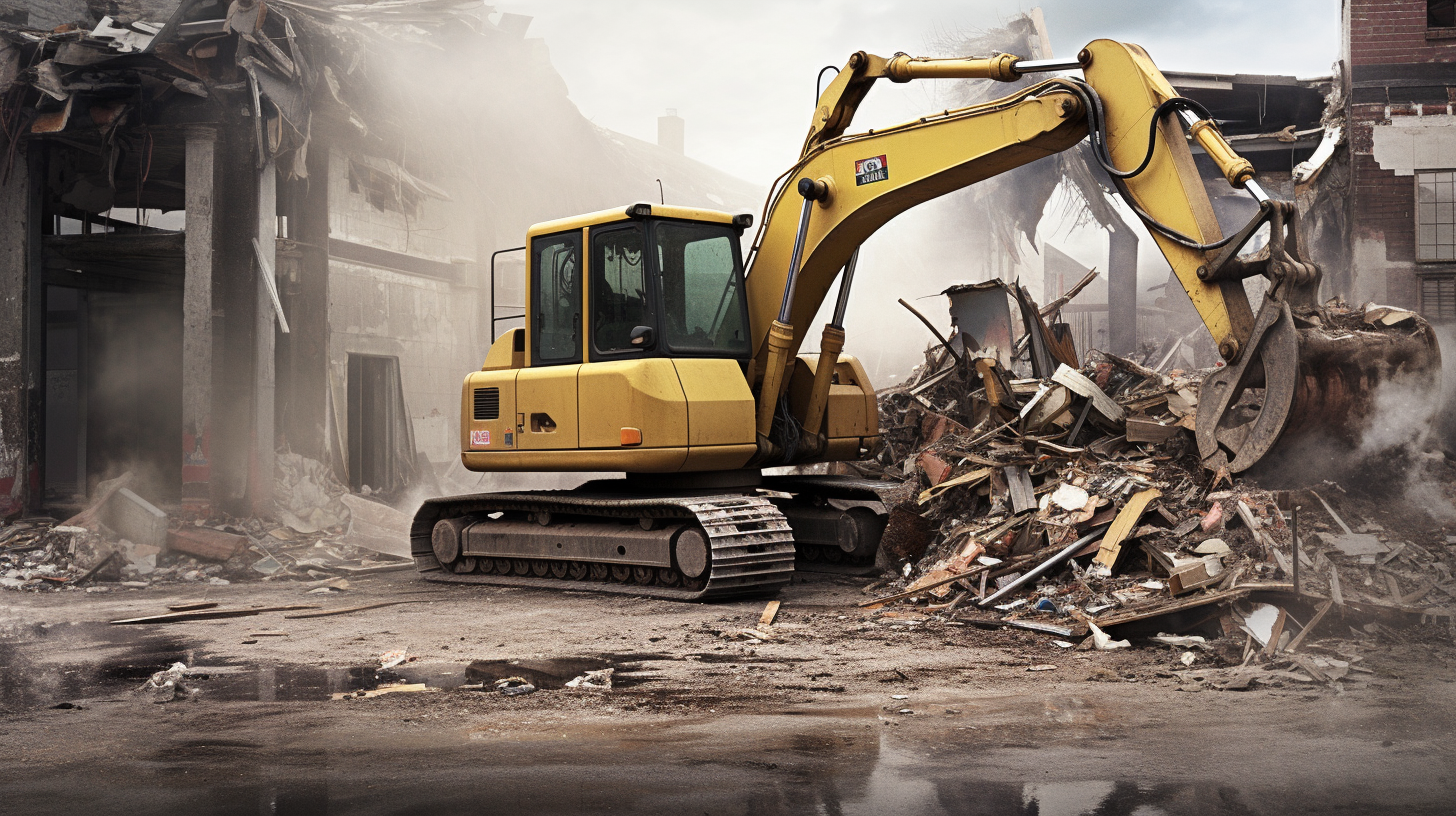
Debris removal is a universal need, but the challenges and strategies can vary greatly depending on the environment. Urban and rural settings present distinct obstacles due to differences in population density, infrastructure, and types of debris commonly encountered. Recognizing these differences is essential for developing effective debris management plans tailored to each context.
In urban environments, high population density often leads to a faster accumulation of household waste, construction debris, and litter. Limited space and strict municipal regulations can make debris removal a logistical challenge. Conversely, rural areas face their own unique hurdles, such as managing natural debris like fallen branches and vegetation over larger properties, often with fewer waste disposal services available.
This blog explores the contrasting challenges of debris removal in urban and rural settings, shedding light on how these environments shape debris management needs and practices. Understanding these distinctions helps property owners, municipalities, and service providers address debris removal more effectively, ensuring cleaner, safer communities.
Common Types of Debris in Urban Areas
Urban environments are characterized by dense populations and diverse activities, which contribute to the generation of various types of debris. From household waste to construction materials, managing urban debris requires tailored strategies to address unique challenges like space constraints and regulatory requirements. Below are the most common types of debris in urban areas and the difficulties associated with their removal.
Residential Waste
Urban households generate significant amounts of waste, including:
- Common Items: Broken furniture, outdated appliances, and discarded electronics.
- Challenges: Limited space for disposal and high frequency of waste generation make residential debris management particularly challenging. Apartment complexes and multi-family housing units often have restricted access to large-scale waste disposal facilities, requiring regular and efficient municipal services.
Efficient collection schedules and recycling initiatives are crucial for keeping residential areas clean and manageable.
Construction and Renovation Debris
Urban development and constant infrastructure upgrades result in a steady flow of construction-related debris, including:
- Types of Waste: Materials like drywall, bricks, tiles, and leftover concrete from remodeling and demolition projects.
- Challenges: Disposal regulations require adherence to local laws, and congested streets can complicate transportation of large or heavy debris to appropriate facilities.
Careful planning and coordination with waste management services are essential for navigating these logistical hurdles.
Green Waste
Despite being densely populated, urban areas often have parks, gardens, and landscaped spaces that generate green waste:
- Common Examples: Fallen leaves, trimmed branches, grass clippings, and other organic debris.
- Challenges: Urban areas often lack accessible composting or green waste facilities, making disposal inefficient. Additionally, space limitations can hinder the storage and processing of organic materials.
Promoting urban composting programs and centralized green waste drop-off points can address these issues effectively.
Litter and Illegal Dumping
Public spaces in urban areas frequently suffer from litter and illegal dumping:
- Types of Debris: Trash like food wrappers, bottles, abandoned furniture, and construction waste left in streets or vacant lots.
- Challenges: Recurring cleanup efforts strain municipal resources, and enforcement of anti-dumping regulations can be inconsistent. These problems often detract from the city's cleanliness and appeal.
Education campaigns, stricter regulations, and community involvement are key to addressing litter and illegal dumping in urban settings.
Common Types of Debris in Rural Properties
Rural properties generate unique types of debris due to their vast landscapes, agricultural activities, and exposure to natural elements. Managing this debris often involves challenges like handling large volumes, navigating remote locations, and addressing seasonal variations. Below are the most common types of debris encountered in rural areas and the specific obstacles they present.
Agricultural Waste
Farming activities produce significant amounts of organic debris, including:
- Common Examples: Hay, crop residue, animal waste, and discarded packaging from farming supplies.
- Challenges: The volume of agricultural waste often fluctuates with planting and harvest seasons, creating periods of intense debris accumulation. Proper disposal or repurposing, such as composting, requires space, equipment, and knowledge of sustainable practices.
Developing efficient waste management systems tailored to agricultural needs is essential for maintaining productivity and environmental balance.
Natural Debris
Rural landscapes are prone to natural debris resulting from weather conditions and the environment itself:
- Examples: Fallen branches, rocks, soil erosion materials, and overgrown vegetation.
- Challenges: With expansive land areas, debris can accumulate across fields, forests, and waterways, making removal time-intensive. Remote locations may limit access to equipment and resources needed for cleanup.
Regular maintenance and strategic planning are critical for addressing natural debris on rural properties.
Structural and Equipment Debris
Farming and rural operations often involve heavy use of machinery and infrastructure, leading to:
- Common Examples: Broken fences, worn-out farm machinery, and discarded building materials from barns or sheds.
- Challenges: Bulky or heavy items require specialized tools and transportation for removal. Additionally, rural properties may lack convenient access to disposal facilities for scrap metal, plastics, or large materials.
Partnering with recycling programs or local waste services can help manage this type of debris effectively.
Storm and Wildfire Debris
Rural areas are particularly vulnerable to extreme weather and wildfires, which generate significant debris:
- Examples: Uprooted trees, ash, soil displacement, and damaged structures.
- Challenges: Cleanup efforts can be large-scale and labor-intensive, requiring equipment like chainsaws, tractors, or dump trucks. Safety concerns, such as unstable debris or hazardous materials, add complexity to the removal process.
Enlisting professional cleanup services and creating emergency response plans are key to managing disaster-related debris.
Debris Removal Methods for Urban Areas
Debris removal in urban areas requires efficient and organized methods to address the challenges of dense populations, limited space, and diverse waste types. Whether it’s household trash, construction materials, or hazardous items, urban residents and businesses have several reliable options for managing debris effectively. Here are some of the most practical methods tailored for urban environments.
Scheduled Municipal Services
Municipal services are the backbone of urban waste management, offering convenient and consistent solutions for everyday debris:
- Curbside Pickup: Regularly scheduled pickups handle household waste and recyclables, ensuring timely disposal. Many cities provide separate bins for trash, recyclables, and compostable materials to streamline sorting.
- Green Waste Programs: Designed for compostable materials like leaves, grass clippings, and small branches, these programs often include seasonal pickups or designated drop-off points.
By utilizing these services, urban residents can keep their spaces clean and contribute to efficient waste management systems.
Dumpster Rentals
For larger projects such as renovations or demolitions, dumpster rentals are a practical choice:
- Ideal Uses: Compact dumpsters fit well in limited urban spaces, making them perfect for collecting construction debris, bulky items, or large volumes of waste.
- Tips for Success: Choose the appropriate size based on the scope of your project to avoid unnecessary costs. Ensure compliance with local regulations, such as obtaining city permits for placing dumpsters on streets or sidewalks.
Dumpster rentals offer flexibility and convenience for managing large-scale urban debris efficiently.
Professional Cleanup Services
Professional cleanup services provide specialized expertise for handling complex debris removal needs:
- Specialized Removal: These services handle hazardous waste, bulky items, or post-disaster cleanup with appropriate tools and training.
- Key Benefits: Professionals ensure efficient and compliant disposal, particularly in densely populated areas where improper handling can cause safety or legal issues.
Hiring professionals is especially beneficial for situations requiring quick, safe, and thorough debris removal.
Recycling Initiatives
Recycling programs in urban areas promote sustainability while reducing the burden on landfills:
- Local Centers: Residents can drop off electronics, metals, plastics, and other recyclables at designated centers equipped to process these materials responsibly.
- Community Participation: Encouraging neighbors and local businesses to participate in recycling efforts helps build a culture of waste reduction and environmental stewardship.
Active engagement in recycling initiatives supports urban sustainability and fosters community pride in clean, green spaces.
Debris Removal Methods for Rural Properties
Rural properties generate a wide variety of debris, from organic waste to large-scale agricultural or construction remnants. Effective debris removal methods tailored to rural settings prioritize practicality, sustainability, and resourcefulness. Here are some of the best approaches for managing debris in rural areas.
On-Site Composting
On-site composting is a sustainable method of managing organic waste while enriching the soil:
- Process: Organic materials such as leaves, grass clippings, and food scraps are decomposed into nutrient-rich compost. Compost piles or bins are easy to establish and maintain on rural properties with ample space.
- Benefits: Composting reduces the need for external disposal, promotes self-sustainability, and minimizes contributions to landfills, benefiting both the property and the environment.
This method is particularly effective for agricultural properties seeking eco-friendly waste solutions.
Burning or Mulching
For managing large volumes of natural debris, burning and mulching are practical options:
- Controlled Burning: Agricultural waste, such as crop residues or dead vegetation, can be burned in a controlled manner where permitted by local regulations. This method quickly clears debris while replenishing soil nutrients in some cases.
- Mulching: Wood chippers or mulchers can process branches, shrubs, and other organic debris into mulch. Mulch can be used for landscaping, erosion control, or as a protective ground cover for plants.
Both methods help manage natural waste effectively while providing reusable byproducts.
Bulk Transport to Disposal Sites
Rural properties often require bulk transport solutions to handle large-scale debris:
- Transport Options: Renting trailers, trucks, or dump carts allows property owners to move significant amounts of debris to regional landfills or recycling facilities.
- Coordinated Disposal: Many rural waste facilities offer recycling services for materials like metal, wood, or plastics, ensuring that debris is repurposed rather than discarded.
Bulk transport is a reliable option for managing non-organic or non-burnable debris efficiently.
Collaboration with Neighbors
Pooling resources with neighbors can make debris removal in rural communities more manageable:
- Shared Cleanup Efforts: Organizing group cleanups for shared areas, such as roadsides or community spaces, reduces individual workloads.
- Resource Sharing: Borrowing or sharing equipment like tractors, trailers, or chippers can lower costs and improve efficiency for everyone involved.
Collaboration fosters a sense of community while addressing debris removal needs on a larger scale.
Key Differences in Urban vs. Rural Debris Removal
Debris removal varies significantly between urban and rural settings, influenced by differences in infrastructure, property size, and available resources. Understanding these distinctions helps tailor effective cleanup strategies for each environment. Here are the key differences between debris removal in urban and rural areas.
Accessibility to Services
- Urban Areas:
Urban environments benefit from proximity to municipal services, recycling centers, and organized waste collection programs. Residents typically have access to regular curbside pickups, green waste disposal, and specialized bulk removal services for appliances or furniture. - Rural Areas:
Rural properties often rely on self-managed solutions due to limited access to municipal services. Disposal typically involves transporting debris to regional landfills or recycling centers, which can be located miles away, increasing the time and effort required.
The disparity in service availability necessitates more independent management in rural settings compared to the convenience of urban infrastructure.
Scale of Cleanup
- Urban Areas:
Debris cleanup in urban areas often involves smaller spaces like yards, streets, or parks, resulting in frequent but manageable volumes of waste. The density of debris per square foot can be higher, but regular municipal services help maintain cleanliness. - Rural Areas:
Rural properties span larger areas, accumulating significant volumes of debris over time, such as agricultural waste, storm debris, or natural overgrowth. The scale of cleanup is more sporadic but requires intensive efforts when performed.
This contrast highlights the difference in frequency and magnitude of debris removal between urban and rural properties.
Types of Equipment Needed
- Urban Areas:
Urban debris removal generally requires compact tools suited for confined spaces. Hand trucks, small dumpsters, and leaf blowers are commonly used for handling residential and construction waste. - Rural Areas:
Rural properties demand heavy-duty equipment like tractors, trailers, and wood chippers to manage large volumes of agricultural and natural debris. Tools must be robust enough to handle extensive cleanup over wide areas.
The equipment required reflects the differences in property size and debris types typical of urban and rural environments.
Environmental Considerations
- Urban Areas:
Urban debris removal emphasizes sustainability, with a strong focus on recycling and regulated disposal to minimize landfill use. City ordinances often mandate proper segregation and environmentally conscious waste management. - Rural Areas:
Rural settings lean toward integrating natural methods, such as composting organic waste or using controlled burns for agricultural debris. These practices reduce transportation needs and promote self-sufficient waste management.
Both settings aim for eco-friendly solutions, but the methods differ based on available resources and environmental impact.
FAQs
Contact Bull City Crawlspace Today!
Bull City Crawlspace will do everything we can to ensure your experience with us is excellent.
Request A FREE Estimate
Request a Free Estimate Form
Checkout Recent Post




Got a Question? We’re Here to Help.
You can arrange an appointment or make an enquiry by phone or email, orget in touch to us via our contact form.

